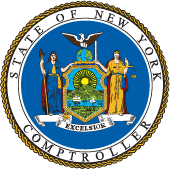The Child Care and Development Block Grant (CCDBG) (Assistance Listing Number 93.575) is the primary federal program that provides child care assistance to low-income working families. Funds are provided to the state, which then distributes funding to localities. Eligible recipients include children who are under the age of 13, live with a parent or parents who are working or participating in job training/education programs, have a family income at or below 85 percent of the state median income and have family assets that do not exceed $1 million.
Funds to New York City
As of the City’s latest projections (January 2025), CCDBG is the second-largest source of federal funding for the City in FY 2025 at $848 million citywide. Nearly 98 percent is received by the Administration for Children’s Services (ACS) with about $125 million of those funds allocated to Department of Education (DOE). A small amount is also received by the Department of Health and Mental Hygiene for day care inspections. However, CCDBG funds are one component of the Child Care Block Grant (CCBG) that the State provides to the City. CCBG is a mix of federal and state funds, and the federal portion of CCBG may vary by year.
Impact
- The January Plan assumes that total CCDBG funding will decline by more than a third from FY 2025 to FY 2026. However, the City will likely incorporate additional CCDBG funds during FY 2026. The FY 2025 Adopted budget assumed CCDBG funds of $512.6 million for FY 2025, which the January Plan increased to $833.6 million.
- CCDBG funds cover nearly 80 percent of ACS’s child care services in FY 2025, which include vouchers and public assistance. The City funds about 17 percent of these costs with the balance funded by the State. In FY 2026, CCDBG is currently expected to fund 71 percent of child care services’ costs (see Figure 1).
- While enrollment dropped during the pandemic, ACS reported average child care voucher enrollment of 71,039 in FY 2024, exceeding pre-pandemic levels. Enrollment continued to grow in FY 2025, averaging 79,441 for the first four months, compared to 65,572 in the first four months of FY 2024 (see Figure 2).
- The City is legally required to provide vouchers to cash assistance recipient families if they are working, looking for work or in school. Voucher demand for families receiving cash assistance was lower during the pandemic as work requirements were suspended, enabling the City to provide discretionary support for vouchers for low-income families. Work requirements were reinstated last year and are expected to increase cash assistance vouchers. Without additional funds, ACS has stated that approximately 60,000 children from low-income families could lose their vouchers over the next fiscal year as a result. State budget proposals did not include additional funds for vouchers.
- The City also budgets $125 million of CCDBG funds annually to use toward DOE’s extended day and year seats for children ages 0 to 5, including EarlyLearn, 3-K, and Pre-K. The CCDBG funds comprise about 10 percent of the total planned other than personal services (OTPS) costs for Pre-K and Early Childhood.
FIGURE 1 – CCDBG Share of Cost for ACS, DOE Programs
FY 2026 Preliminary Budget (in millions)
| FY 2025 | FY 2026 | |
|---|---|---|
| ACS | ||
| Total Costs, Child Care Svcs. | $ 880.3 | $ 536.8 |
| CCDBG Funding | 701.9 | 380.9 |
| CCDBG Share | 79.7% | 71.0% |
| DOE | ||
| Total OTPS Costs, Pre-K | $ 825.7 | $ 686.8 |
| Total OTPS Costs, Early Child. | 456.8 | 454.4 |
| Subtotal | $1,282.4 | $1,141.2 |
| CCDBG Funding | 125.0 | 125.0 |
| CCDBG Share | 9.7% | 11.0% |
Note: Columns may not add due to rounding.
Sources: NYC Office of Management and Budget; OSC analysis
FIGURE 2 – Number of Children Using Child Care Vouchers
Sources: NYC Open Data; OSC analysis
